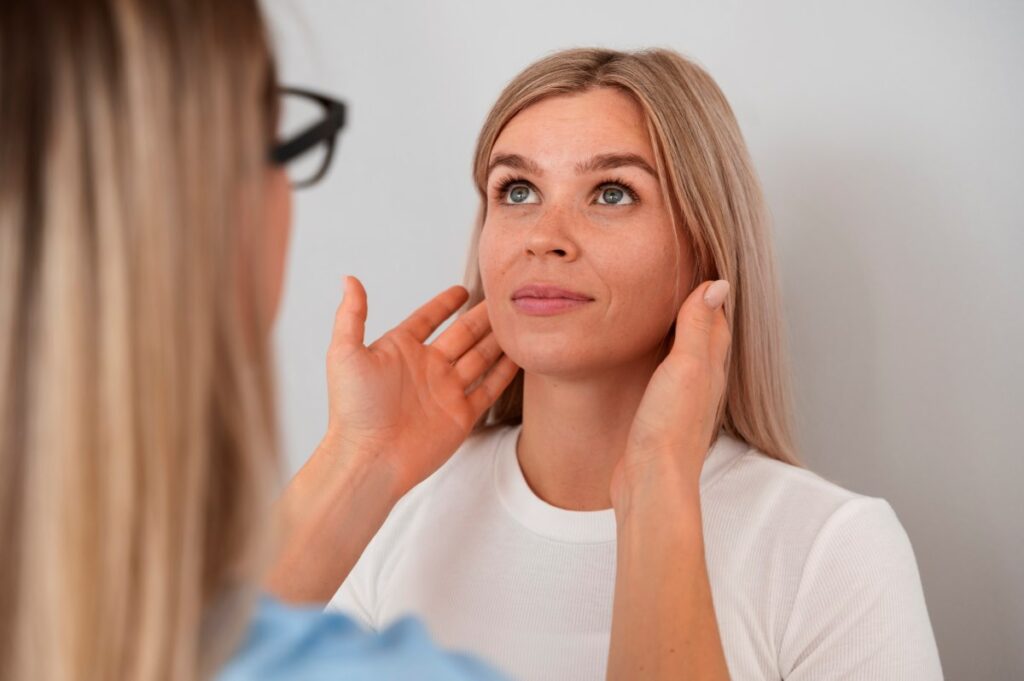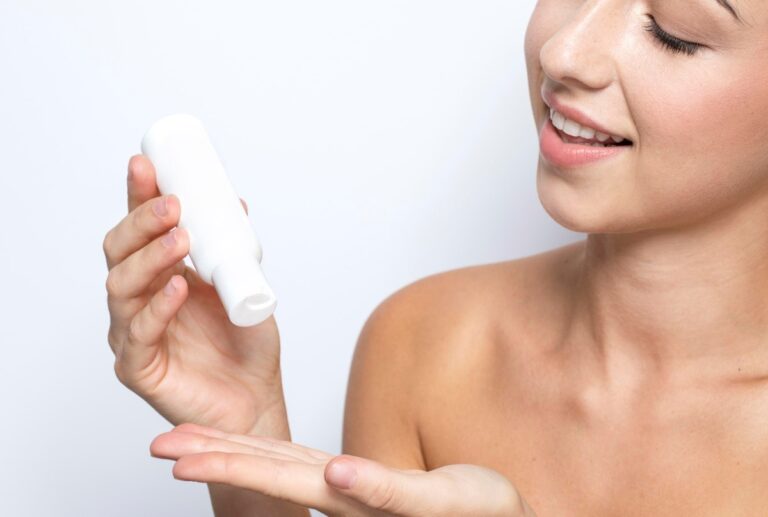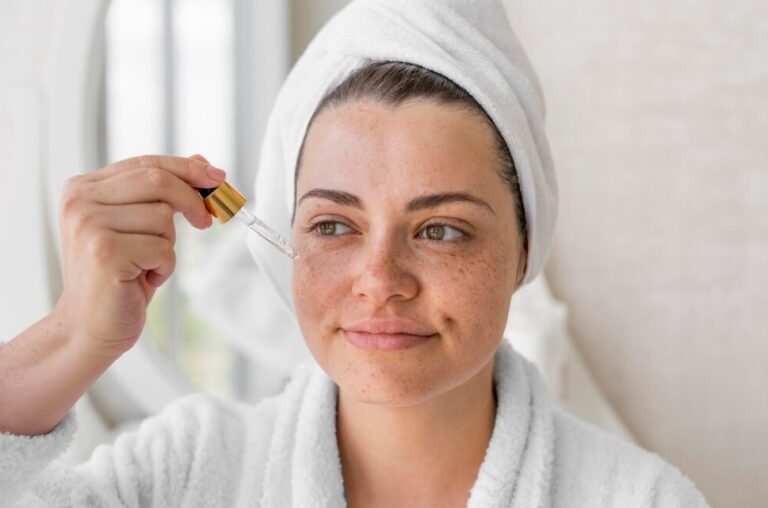The Power of Buccal Fat Removal: Before and After Transformations You’ll Love
A popular cosmetic procedure used to shape the face and lessen cheek fullness is buccal fat removal. Whether you’re considering the surgery for a more contoured look or just curious about its effects, understanding the process and its results is essential.
In this guide, we’ll explore buccal fat removal before and after, providing insights into what you can expect in terms of appearance, recovery, and long-term outcomes. From defining the ideal candidates to showcasing typical transformations, this article will help you decide if this procedure is right for you.
What Is Buccal Fat Removal? Exploring Its History
Buccal fat removal has just recently become widely popular, despite the fact that cosmetic surgery has long focused on face shaping. The roots of facial fat removal date back to the early 20th century, when surgeons explored ways to alter facial appearance through fat excision techniques. However, buccal fat removal, specifically targeting the cheek area, did not become a mainstream procedure until the late 20th century.
In the 1980s and 1990s, facial contouring procedures became more refined with the development of advanced techniques in cosmetic surgery. Buccal fat removal was one such innovation, allowing surgeons to offer a minimally invasive option for cheek reduction.
As beauty standards shifted toward more defined, sculpted facial features, demand for this procedure surged. The “buccal fat removal before and after” results of buccal fat removal showcased the dramatic changes possible with this seemingly simple surgery, helping to propel it into the spotlight.
Today, buccal fat removal is a commonly sought-after procedure by both men and women looking to enhance their facial structure. Celebrities and influencers, often admired for their striking facial contours, have further popularized the trend. As a result, many individuals are drawn to the procedure, intrigued by the idea of achieving the chiseled look seen in buccal fat removal before and after transformations.

Why Buccal Fat Removal Is a Game-Changer: Exploring Popularity
The growing acceptance of buccal fat removal can be attributed to several causes, such as evolving aesthetic standards, advancements in cosmetic surgery, and cultural trends. With more people searching for ways to get a more defined, sculpted look in recent years, interest in this method has grown.
Buccal fat reduction has been a popular option for those looking to enhance their facial features because to the incredible “buccal fat removal before and after” results that have drawn notice from onlookers.
Cultural Shift Towards Sculpted Facial Features
One of the primary reasons buccal fat removal has gained momentum is the shift in beauty ideals. Today’s beauty standards often favor sharp, angular features, with high cheekbones and defined jawlines being seen as markers of attractiveness.
Celebrities and influencers frequently embody these features, leading to a societal preference for a more chiseled look. As a result, individuals who naturally have fuller cheeks may feel that their face appears round or less defined, motivating them to seek out buccal fat removal to achieve a sleeker aesthetic.
Influence of Celebrities and Social Media
Social media has played a massive role in the rise of buccal fat removal’s popularity. Celebrities and influencers who undergo the procedure often showcase their “buccal fat removal before and after” results, generating curiosity and desire among their followers.
Platforms like Instagram and TikTok are filled with images that highlight the dramatic transformations achievable through cosmetic surgery, buccal fat removal included. Additionally, media speculation around certain high-profile figures undergoing this procedure has further fueled public interest. This cultural phenomenon has created a ripple effect, making buccal fat removal one of the most sought-after facial contouring surgeries.
Subtle Yet Significant Results
The procedure’s dramatic yet subtle consequences are another important reason contributing to its popularity. In contrast to more intrusive procedures like facelifts, buccal fat removal yields a discernible improvement without significantly changing the face.
By minimizing extra fullness in the cheeks, the technique improves the natural bone structure and leaves the face looking more refined and defined. If you’re looking for a slight upgrade, this option can be intriguing because of the noticeable “buccal fat removal before and after” alterations. This balance between subtlety and impact resonates with individuals who want to improve their appearance without making drastic changes.
Minimally Invasive with Quick Recovery
Buccal fat reduction has an added appeal because it is a less invasive technique. In comparison to other cosmetic procedures, healing is often swift and there are no obvious scars from the inside of the mouth incisions. The surgery is more accessible because of the comparatively simple recovery period that enables patients to resume their regular activities sooner.
Its increasing popularity can be attributed to both its efficacy and ease. Buccal fat removal also attracts patients since it provides effects that endure a long time and frequently don’t require additional maintenance treatments.

Rise of Non-Surgical and Surgical Facial Contouring
Facial contouring has gained significant attention in the cosmetic surgery and cosmetics sectors in recent years. There has been a rising trend to draw attention to certain facial features with non-surgical procedures like fillers and cosmetic methods like contouring and highlighting.
Buccal fat reduction is a great fit for this trend since it provides a long-term solution for achieving the angular, sculpted look that so many people desire. Even if non-surgical therapies are becoming more and more popular, buccal fat removal remains an attractive surgical alternative for anyone looking for a permanent solution to face fullness.
Inside the Buccal Fat Removal Procedure
By eliminating fat from the lower cheek region, buccal fat reduction is a rather simple cosmetic procedure intended to improve face definition. For people who want a more sculpted appearance, as shown in “buccal fat removal before and after” changes, this outpatient operation is intriguing. Potential patients can better anticipate what to expect before, during, and after the procedure by being aware of the entire process.
Pre-Procedure: Consultation and Preparation
It’s crucial to get a full consultation with a licensed plastic surgeon prior to having buccal fat removed. The surgeon assesses your facial shape during this appointment to see if you are a good candidate for the operation. Candidates that are ideal often want a more contoured appearance and have broader cheekbones. Along with going over your medical history and discussing any possible hazards, the surgeon will also set reasonable expectations for the procedure’s results.
Pre-operative instructions are given if it is decided to go ahead with the procedure. Avoiding some drugs, such as blood thinners or anti-inflammatories, which may worsen bleeding after surgery, may be one of them. To encourage maximum recovery, patients are also recommended to give up smoking in the weeks preceding the surgery.
The Buccal Fat Removal Procedure
The actual buccal fat removal process is not very long—it usually takes between thirty and sixty minutes to finish. Depending on the surgeon’s suggestion and the patient’s option, it is either done under general anesthesia or local anesthetic with sedation. What transpires throughout the procedure is broken down into several steps:
- Incision Placement: To avoid visible scars on the exterior, the surgeon starts by making tiny incisions within the mouth, particularly along the inner cheeks. This method makes sure that the face is free of external scars, which is important since it adds to the surgery’s allure.
- Exposure of Buccal Fat Pads: The buccal fat pads, which are situated between the face muscles, are carefully accessed by the surgeon after the incisions are performed. The broader, rounder look in the lower cheeks is the result of these fat pads.
- Fat Removal: The surgeon next carefully trims each cheek’s fat to the proper quantity. Usually, the amount taken is adjusted to the patient’s preferred degree of face sculpting. The idea is to make the body appear more angular and leaner without going overboard with fat removal, which might eventually make the body appear haggard.
- Incision Closure: Dissolvable sutures are used by the surgeon to seal the incisions after the fat pads are removed. One major benefit for individuals who are worried about visible scars after surgery is that there is no visible scarring because the incisions are performed within the mouth.
Post-Procedure: Recovery and Aftercare
Patients should anticipate some swelling and discomfort after the buccal fat removal operation, although these may be controlled with prescription painkillers and cold compresses. Patients are usually recommended to have a soft-food diet for a few days after the incisions since they are within the mouth, to prevent discomfort or infection. Maintaining proper dental hygiene is essential to preventing issues from microorganisms during the healing process.
Although the swelling normally goes down in a few weeks, it can take many months for the full effects to manifest. The “buccal fat removal before and after” comparison becomes more noticeable as the cheeks heal, displaying a more defined, thinner face.

Long-Term Results and Considerations
The fact that buccal fat reduction produces effects that last is one of its benefits. The buccal fat pads cannot regrow after they are eliminated, therefore the appearance of being thinner and more defined is irreversible. Patients should, therefore, maintain a constant weight because large swings in weight might have an impact on the procedure’s overall result.
Buccal fat removal can produce quite transformational “buccal fat removal before and after” effects, but patients should have reasonable expectations. Although the treatment can improve the definition of the face, those with naturally larger cheeks are the greatest candidates. People who have very thin faces or very little facial fat may not be the best candidates since too much removal might make them seem quite hollow as they age.
Buccal Fat Removal Before and After Identifying Risks and Side Effects You Should Know
Similar to any surgical process, there are possible dangers and adverse effects associated with buccal fat removal. Even if the “buccal fat removal before and after” results might be striking, it’s important to be completely aware of the potential problems. Before choosing to have buccal fat removal surgery, applicants should be aware of the dangers involved, even though the procedure is usually regarded as safe when carried out by a skilled surgeon.
Common Side Effects of Buccal Fat Removal
- Swelling and Bruising: Following buccal fat removal before and after, swelling is the most frequent adverse consequence. For a few days to weeks after the surgery, the cheeks may seem bloated or puffy, which may momentarily mask the ultimate results. There may also be some face and mouth region bruises, although these usually go away in a week or two. Swelling and bruising can be reduced by using cold compresses and according to the surgeon’s post-operative care recommendations.
- Discomfort and Soreness: As is typical with any operation, there should be some tenderness and discomfort in the afflicted location throughout the healing phase. Most patients report having mild to moderate cheek pain, which is frequently treatable with prescription painkillers. Since the incisions are done within the mouth, it’s crucial to keep your mouth clean and eat soft foods to prevent irritation in the region, which may be sensitive for several days.
- Numbness: Temporary numbness or a tingling sensation in the cheeks may occur buccal fat removal before and after. This happens due to the proximity of nerves in the face to the surgical area. In most cases, the numbness subsides as the nerves heal, and normal sensation returns within a few weeks. However, in rare instances, nerve damage can lead to prolonged or permanent numbness.
Potential Risks and Complications
- Infection: Any surgical procedure carries a risk of infection, and buccal fat removal is no exception. Since the incisions are made inside the mouth, there is an increased need for diligent oral hygiene during recovery. Failure to properly care for the surgical area can introduce bacteria, leading to an infection. Surgeons typically prescribe antibiotics to reduce this risk, and patients must follow post-operative care instructions carefully to avoid complications.
- Facial Asymmetry: Although proficient surgeons strive for harmonious, symmetric outcomes, a little chance of facial asymmetries arises after the excision of buccal fat. This might happen if one cheek is thinner than the other or if the healing process has a different effect on the two halves of the face. It is not unusual to have little asymmetry, and in certain situations, more treatments or small modifications may be necessary to rectify it. More noticeable asymmetry, however, may cause one to be dissatisfied with the “buccal fat removal before and after” outcomes.
- Overcorrection: An appearance of hollowness or sunkenness can be caused by excessive removal of buccal fat, especially in those whose faces are naturally thinner. Although contouring and slimming the cheeks is the aim of buccal fat reduction, too much fat removal can make the skin appear extremely thin or old. This is why it is crucial to work with an experienced surgeon who understands facial balance and proportion to avoid overcorrection.
- Prolonged Swelling: In some cases, swelling may last longer than expected. While most patients see significant improvement within a few weeks, others may experience prolonged swelling, which can delay the visibility of the final results. In rare instances, fluid retention in the cheeks may persist, requiring further treatment or drainage.
- Nerve Damage: Nerve injury is one of the most significant, but uncommon, hazards associated with buccal fat reduction. The buccal fat pads are in close proximity to the facial nerves that govern movement and feeling in the cheeks; inadvertent damage to these neurons during surgery may cause facial weakness or paralysis. Permanent nerve damage is an uncommon but possible consequence; most occurrences of nerve damage are transient and heal over time.
- Poor Healing or Scarring: Usually there is no apparent scarring since the incisions are performed inside the mouth. Rarely, though, the interior incisions could not heal correctly, which might result in problems including the development of scar tissue or persistent pain. A delayed healing process might potentially raise the chance of infection or other complications after surgery.

Exploring Alternatives to Buccal Fat Removal
Buccal fat reduction may not be the best option for everyone, even while it provides a long-term way to reduce cheek fat and achieve a more defined facial structure. While some people might favor less invasive or permanent choices, others could want for face contouring techniques that give them more control over how their appearance is shaped.
If you’re not sure you want to commit to the improvements that buccal fat removal provides, there are a few non-surgical options that can still give you remarkable “buccal fat removal before and after” alterations.
1. Facial Contouring with Dermal Fillers
Dermal filler face contouring is one of the most well-liked non-surgical solutions to buccal fat reduction. Fillers such as hyaluronic acid (HA) are frequently utilized to improve the look of facial features such as the jawline and cheekbones. Dermal fillers operate by increasing volume in certain places to provide a sculpted and contoured look, as opposed to eliminating fat.
- How It Works: The filler is injected into strategic points on the face, such as the cheekbones and jawline, to create the illusion of a more defined structure. By lifting and adding volume in specific areas, fillers can balance out the face and provide a contoured effect.
- Benefits: The procedure is quick, minimally invasive, and offers immediate results. Unlike buccal fat removal, which is permanent, fillers are temporary and typically last anywhere from 6 to 18 months, depending on the type used. This flexibility allows patients to adjust their look over time.
- Considerations: Since fillers are temporary, they require maintenance if you want to keep the results. Additionally, they might not provide the same level of cheek slimming as buccal fat removal, but they are a great option for those seeking a non-surgical solution.
2. Botox for Facial Slimming
Botox, commonly used for wrinkle reduction, can also be utilized for facial slimming, particularly in the lower face. This method is often used to reduce the size of the masseter muscles (the muscles used for chewing), which can create a broader or fuller jawline. By relaxing these muscles, Botox can make the face appear slimmer and more contoured.
- How It Works: Botox is injected directly into the masseter muscles to reduce their activity, which over time can lead to a decrease in muscle size and a more streamlined jawline. This can result in a more defined lower face without the need for surgery.
- Benefits: The procedure is non-invasive, quick, and requires little to no downtime. Results typically become noticeable after a few weeks and can last for several months.
- Considerations: Like fillers, Botox is temporary and requires regular treatments to maintain the slimming effect. It also primarily targets the jawline and may not provide as much cheek slimming as buccal fat removal.
3. Ultherapy and Radiofrequency Treatments
Skin tightening and improving face features can be achieved non-surgically using Ultherapy and other radiofrequency-based treatments. These procedures produce tighter, firmer skin by stimulating the formation of collagen with targeted ultrasonic or radiofrequency radiation. By lessening sagging or fullness in the cheek and lower facial regions, this can give the face a more defined appearance.
- How It Works: These treatments deliver energy to the deeper layers of the skin, which encourages the production of collagen and elastin. As the skin tightens, the face appears more lifted and contoured, especially around the cheeks and jawline.
- Benefits: These procedures are non-invasive and require little to no downtime, making them a great option for those who want to avoid surgery. Results appear gradually over a few months as collagen builds up in the skin, providing a natural-looking enhancement.
- Considerations: Ultherapy and radiofrequency treatments may not provide the same dramatic cheek slimming as buccal fat removal, but they can be a good option for those looking to reduce mild to moderate fullness or sagging.
4. Cheek Liposuction
Cheek liposuction is an option for people seeking a more focused surgical alternative to buccal fat reduction. In order to obtain a more sculpted appearance, cheek liposuction eliminates extra fat from the outer cheek and lower face areas, whereas buccal fat removal concentrates on eliminating fat pads from within the cheeks.
- How It Works: Small incisions are made near the target area, and a thin cannula is used to suction out the fat. This procedure is often performed under local anesthesia, and the amount of fat removed can be customized based on the patient’s facial structure.
- Benefits: Cheek liposuction offers more precision in removing fat and contouring the face. Since it targets excess fat in the outer cheek, it can enhance facial definition in areas that buccal fat removal may not reach.
- Considerations: Cheek liposuction is a surgical procedure and requires more recovery time than non-invasive treatments. However, the results are more permanent compared to options like fillers or Botox.
5. Kybella for Facial Fat Reduction
Kybella is an injectable treatment designed to dissolve fat in specific areas of the face and neck. While it is primarily used to reduce submental fat (under the chin), it can also be used off-label to treat areas of facial fullness, providing a more contoured look.
- How It Works: Kybella contains deoxycholic acid, which breaks down fat cells in the targeted area. Over time, the body naturally absorbs the destroyed fat cells, leading to a slimmer appearance in the treated area.
- Benefits: Kybella offers a non-surgical solution for reducing localized facial fat, and the results are permanent once the fat cells are destroyed. It is particularly effective for reducing fullness under the chin and along the jawline, creating a more sculpted lower face.
- Considerations: Kybella may require multiple treatments for optimal results, and it may not be suitable for large areas of fat removal. Additionally, there is some downtime involved, as swelling and bruising can occur after each session.
Buccal Fat Removal Before and After: Concluding Insights for Your Aesthetic Decision
For individuals who want to acquire a more refined and sculpted facial appearance, the “Buccal Fat Removal Before and After” voyage is a life-changing experience. The potential of this operation to improve face contours—slimming the cheeks and highlighting features like the cheekbones and jawline—has led to its growing popularity. People can benefit from long-lasting effects that help create a more defined, angular appearance by having their buccal fat pads permanently removed.
For those who are ideal candidates—typically individuals with fuller cheeks seeking a more chiseled appearance—the results can be highly satisfying. However, understanding the procedure, its risks, and alternatives is crucial for making an informed decision. While buccal fat removal offers permanent changes, non-invasive alternatives such as dermal fillers, Botox, and radiofrequency treatments provide flexible and temporary options for those who want to explore facial contouring without surgery.
Ultimately, the “buccal fat removal before and after” results of buccal fat removal highlight its effectiveness in achieving a more refined, elegant appearance. Whether opting for the surgical route or exploring non-surgical alternatives, this guide emphasizes the importance of carefully considering one’s facial structure, aesthetic goals, and long-term desires. With proper research, expert guidance, and realistic expectations, individuals can confidently choose the path that best suits their needs, ensuring a satisfying transformation.







